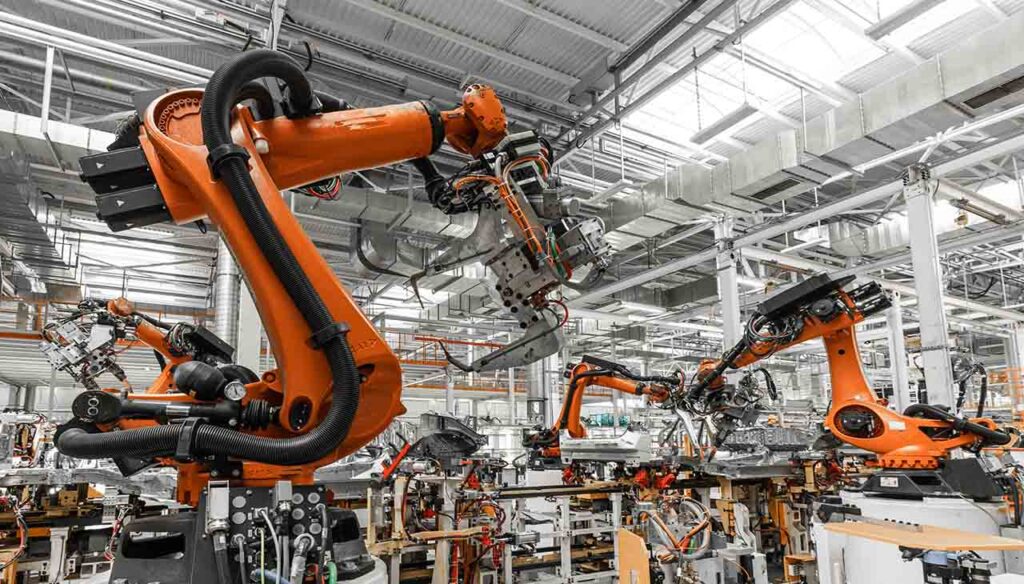Driving enthusiasts, buckle up! The automotive industry we know today is a result of countless safety innovations, transforming not just how we drive, but how we experience the road. This blog post will take you on a historical ride, exploring how safety measures have evolved, their striking impact, and what lies ahead for the future of automotive safety.
Introduction
The early days of the automotive industry were thrilling yet fraught with danger. Cars were a marvel of technology, but safety was often an afterthought. Fatalities and severe injuries were common, prompting the call for better protection. Fast forward to today, and the landscape has dramatically changed, thanks to groundbreaking safety innovations. In this post, we’ll explore the evolution, impact, and future of these life-saving advancements.
The Evolution of Safety Innovations
Early Developments
The story of automotive safety began with simple yet crucial innovations. The seat belt, introduced in the 1950s, was one of the first major milestones. Initially met with resistance, it soon became a staple, reducing fatalities by as much as 50% in serious accidents. Another early innovation was the crumple zone, designed to absorb the energy of a collision and protect passengers.
Airbags and ABS
The introduction of airbags in the 1970s marked another leap forward. These inflatable cushions provided an additional layer of protection, significantly reducing the risk of head and chest injuries during collisions. Around the same time, Anti-lock Braking Systems (ABS) began to gain traction. ABS prevents wheels from locking up during braking, allowing drivers to maintain steering control and avoid accidents.
Modern Technologies
Today, safety innovations have gone high-tech. Features like Electronic Stability Control (ESC) and Lane Departure Warning Systems (LDWS) are now standard in many vehicles. ESC helps maintain vehicle stability by detecting and reducing loss of traction, while LDWS alerts drivers if they unintentionally drift out of their lane. The advent of autonomous driving technology is set to revolutionize safety even further, with self-driving cars promising to minimize human error, a leading cause of accidents.
Impact Analysis
Reduced Fatalities
The impact of these innovations is undeniable. According to the National Highway Traffic Safety Administration (NHTSA), seat belts alone have saved over 375,000 lives since 1960. Airbags have prevented tens of thousands of fatalities, while ABS and ESC have drastically reduced skidding and rollover incidents.
Safer Roads
Statistics show a remarkable decline in road accidents and fatalities over the years. For instance, the implementation of ESC in vehicles has been linked to a 32% reduction in single-vehicle crashes. Similarly, the widespread use of airbags has decreased driver fatalities by approximately 29%.
Enhanced Driver Confidence
These advancements have also bolstered driver confidence. Knowing that their vehicle is equipped with cutting-edge safety features allows drivers to focus more on the road and less on potential hazards. This, in turn, leads to a more relaxed and enjoyable driving experience.
Future Trends
Advanced Driver Assistance Systems (ADAS)
The future of automotive safety looks promising with the development of Advanced Driver Assistance Systems (ADAS). These systems include features like Adaptive Cruise Control (ACC), which automatically adjusts the vehicle’s speed to maintain a safe distance from the car ahead. Another exciting development is Traffic Sign Recognition (TSR), which identifies road signs and displays them on the dashboard, helping drivers adhere to traffic laws.
V2X Communication
Vehicle-to-Everything (V2X) communication is another game-changer on the horizon. This technology enables vehicles to communicate with each other and with infrastructure like traffic lights and road signs. By sharing real-time information, V2X aims to prevent accidents, reduce traffic congestion, and improve overall road safety.
Autonomous Vehicles
Autonomous vehicles are perhaps the most anticipated innovation in automotive safety. Companies like Tesla, Waymo, and Uber are at the forefront of this technology, developing self-driving cars that can navigate complex environments with minimal human intervention. While fully autonomous vehicles are still in the testing phase, their potential to eliminate human error and drastically reduce accidents is immense.
Case Studies
Volvo’s Vision 2020
Volvo has long been a pioneer in automotive safety. Their Vision 2020 initiative aimed to ensure that no one would be killed or seriously injured in a new Volvo car by the year 2020. While ambitious, this goal has driven significant advancements in safety technology, including the integration of advanced sensor systems and automatic emergency braking.
Tesla’s Autopilot
Tesla’s Autopilot system is a prime example of how technology can enhance safety. This semi-autonomous feature uses cameras, radar, and ultrasonic sensors to provide a range of safety and convenience features. These include automatic lane-keeping, adaptive cruise control, and collision avoidance, making Tesla one of the safest vehicles on the road.
Mercedes-Benz PRE-SAFE
Mercedes-Benz’s PRE-SAFE system is designed to prepare the vehicle and its occupants for an impending collision. When the system detects an imminent crash, it takes proactive measures like tightening seat belts, adjusting headrests, and even closing windows to minimize injury. This innovative approach has set a new standard for proactive safety measures in the automotive industry.
Conclusion
The automotive industry has come a long way from its early days of rudimentary safety measures. Today, a plethora of innovations ensures that drivers and passengers are more protected than ever before. From seat belts and airbags to modern-day ADAS and autonomous vehicles, safety innovations continue to transform the industry, making our roads safer and driving a more enjoyable experience.
For automotive enthusiasts, understanding these advancements is crucial. Not only do they make your driving experience safer, but they also highlight the incredible progress we’ve made as an industry. If you have any thoughts or experiences with automotive safety innovations, we’d love to hear from you. Share your stories in the comments below and stay tuned for more updates on the latest in automotive technology.
By recognizing the importance of these innovations, we can appreciate not just the thrill of driving but also the strides taken to ensure our safety. Keep driving, keep exploring, and most importantly, stay safe.

